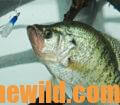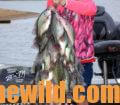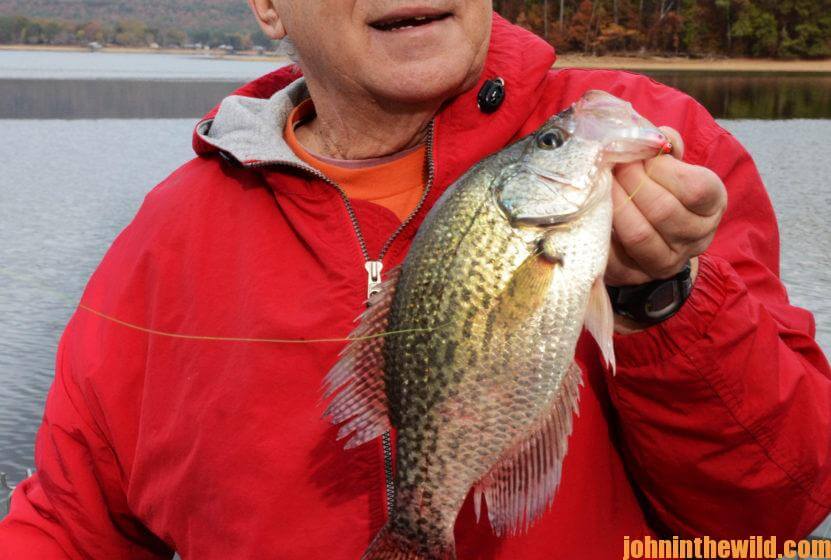Editor’s Note: If you only could take one fishing lure to catch fish anywhere in the world in fresh water or salt water, what lure would you choose and why? This question was the one a team of survival experts had to answer to put together survival kits for World War II pilots. Ultimately, the bucktail jig – a white hair jig – was selected. The bucktail jig resembled a wide variety of bait fish that swam in both fresh water and salt water. This compact lure featured only one hook, could be fished with a hand line, a green stick or a pole and had an extremely-good chance of catching varieties of fish. Jigs, very-simple lures, have lead heads and bodies made of a wide variety of materials. Because a jig has only a single hook, it easily can be stowed away until needed. Jigs are the quickest, easiest lures to make and use for fishing and spending more time outdoors. Your family and friends will enjoy making these lures, while you’re practicing social distancing during the Covid-19 problems.
As we turned into a creek, Edney asked me if I saw a tree root sticking-up and the trunk of a tree in the water. “Look on the bank for trees about that same size. Visualize where that treetop will land in this creek if a strong wind topples it.” I’d always fished for crappie by dropping live minnows around dead treetops in the water. But Edney was talking about fishing co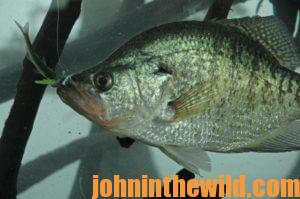 mpletely-submerged, invisible treetops. “You want your jig to land about where you think the end of that treetop may be,” Edney said. “We may have to cast four or five times to locate the exact spot where the crappie are.”
mpletely-submerged, invisible treetops. “You want your jig to land about where you think the end of that treetop may be,” Edney said. “We may have to cast four or five times to locate the exact spot where the crappie are.”
I cast about 4 feet closer than Edney did to where I thought the top of the tree might be. The line unraveled off my spinning reel, the knitting-yarn jig fell slowly to the bottom, and my line twitched. Immediately, I engaged the reel and set the hook. The tip of my rod dove for the surface of the water as the line went taut. I fought the fish to the surface and was surprised to see a big crappie with a knitting-yarn jig hanging out of its mouth. Edney, laughing and grinning now, told me, “I usually catch bigger crappie than most other crappie fishermen, because I’m fishing for crappie that no one else can find, with a jig unlike any jig the crappie ever have seen.”
True to Edney’s word, we lost numbers of jigs, broke off several fish but enjoyed nonstop crappie action. While sitting in the boat and talking about the morning’s fishing, I asked Edney why his homemade jigs caught crappie. He answered, “When something that looks like food falls in front of a crappie, it will grab it and eat it. Since I don’t know 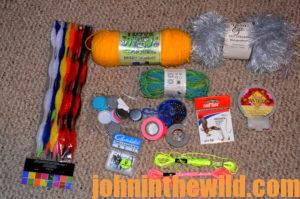 why crappie prefer different colors of jigs at various times of the day and month, I make different colors of jigs to learn what color the crappie prefer on that day.”
why crappie prefer different colors of jigs at various times of the day and month, I make different colors of jigs to learn what color the crappie prefer on that day.”
When I inquired about how Edney had come up with making homemade crappie jigs, Edney answered, “I didn’t believe crappie were particular about painted heads on jigs. I thought that different sizes of shot leads and various sizes and colors of knitting yarn might work. They’re inexpensive too, homemade and fun to make with any colors and/or color combinations you can imagine that crappie may like. I lose many crappie jigs in the thick places I fish. I include all three components for the jigs in my tackle box and can make up a bunch of them quickly while on the water, if I need them.”
On that day and at other times, I found knitting-yarn jigs caught crappie, as well as catfish and bass too. I decided to start making my own quickie fishing lures for fun and to catch several kinds of fish.
To learn more about fishing for catfish, check out John E. Phillips’ book, “Catfish Like a Pro” available in Kindle and print at http://amzn.to/W900eu. 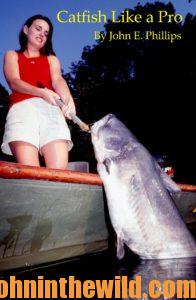
Tomorrow: Why Fish with Chewing Gum Wrapper Jigs to Catch Crappie

